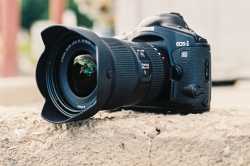>>4438574>Increasing ISO means you are giving up image quality.If we're talking about f/4 then we're probably comparing it to f/2.8. One stop of ISO isn't going to make a difference that AI denoise can't easily compensate for.
>You also get better performance when stopped down, even if shooting at the same f4.Outdated advice.
This can't be said generally. A lot of modern first-party mid-market-and-up lenses are designed to be sharp wide open. Your 24-105 f/4 these days is pretty sharp wide open, and the f/2.8 at f/4 isn't going to get a meaningful difference. Generally constant aperture lenses are going to be mid-market or better, anyway. DSLR lenses are typically as you say, though, and third party lenses you have to take on a case-by-case basis.
F/4 lenses these days seem to be being marketed as lighter weight, smaller, and cheaper alternatives to f/2.8 lenses, with equal image quality.
>Notice how you have to caveat with telephotos, so you understand wide and normal are a bit worse for bokeh at f4But op has a point. If you want bokeh, options are still there. Generally, you want bokeh on the type of photos you take at a narrow angle, and wide angle shots you typically want to stop down a bit to get a wide depth of field. I seldom shoot my wide angle primes at anything wider than f/4 or so, and more often f/5.6 or f/8 -- if I want bokeh I'll usually place the items significantly closer to the lens than the focal point, or make sure the focal point is close to the camera. This usually is the right answer when considering composition, anyway (in the first case, it makes the scene overall sharp, with a few bokeh accents e.g. to add some atmospheric framing. In the second case, the sharp, in-focus object will dominate the frame with perspective distortion).

